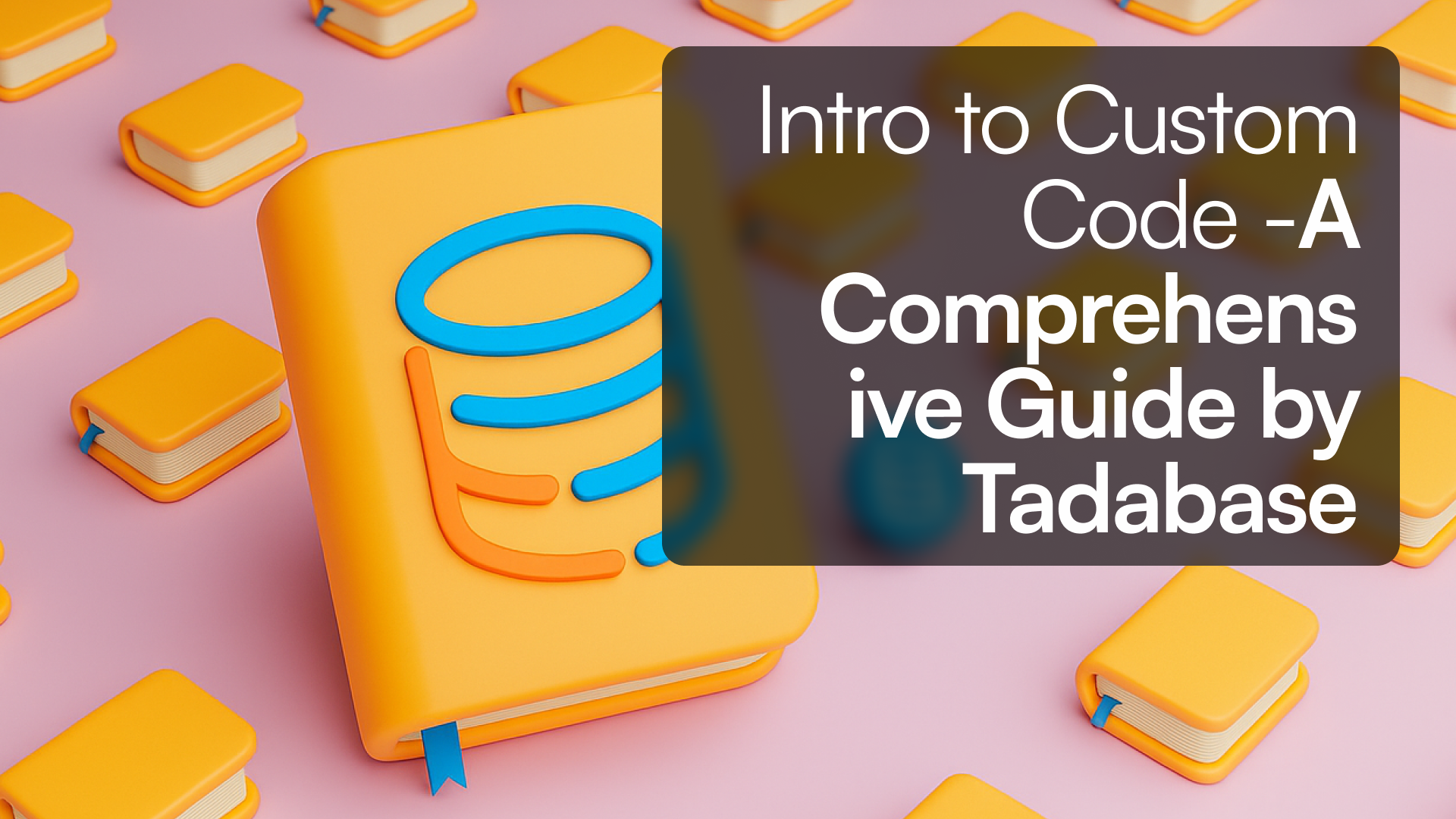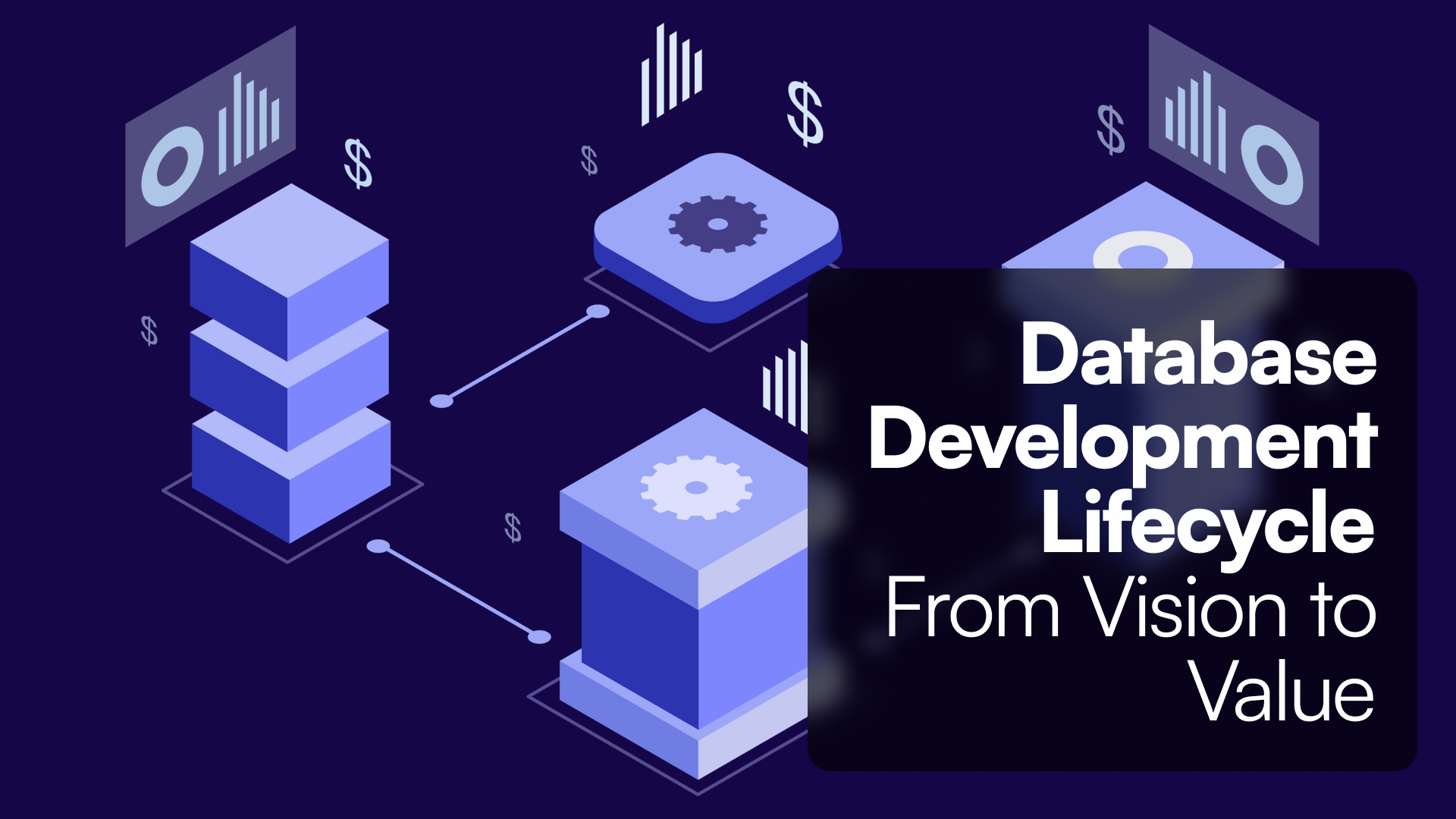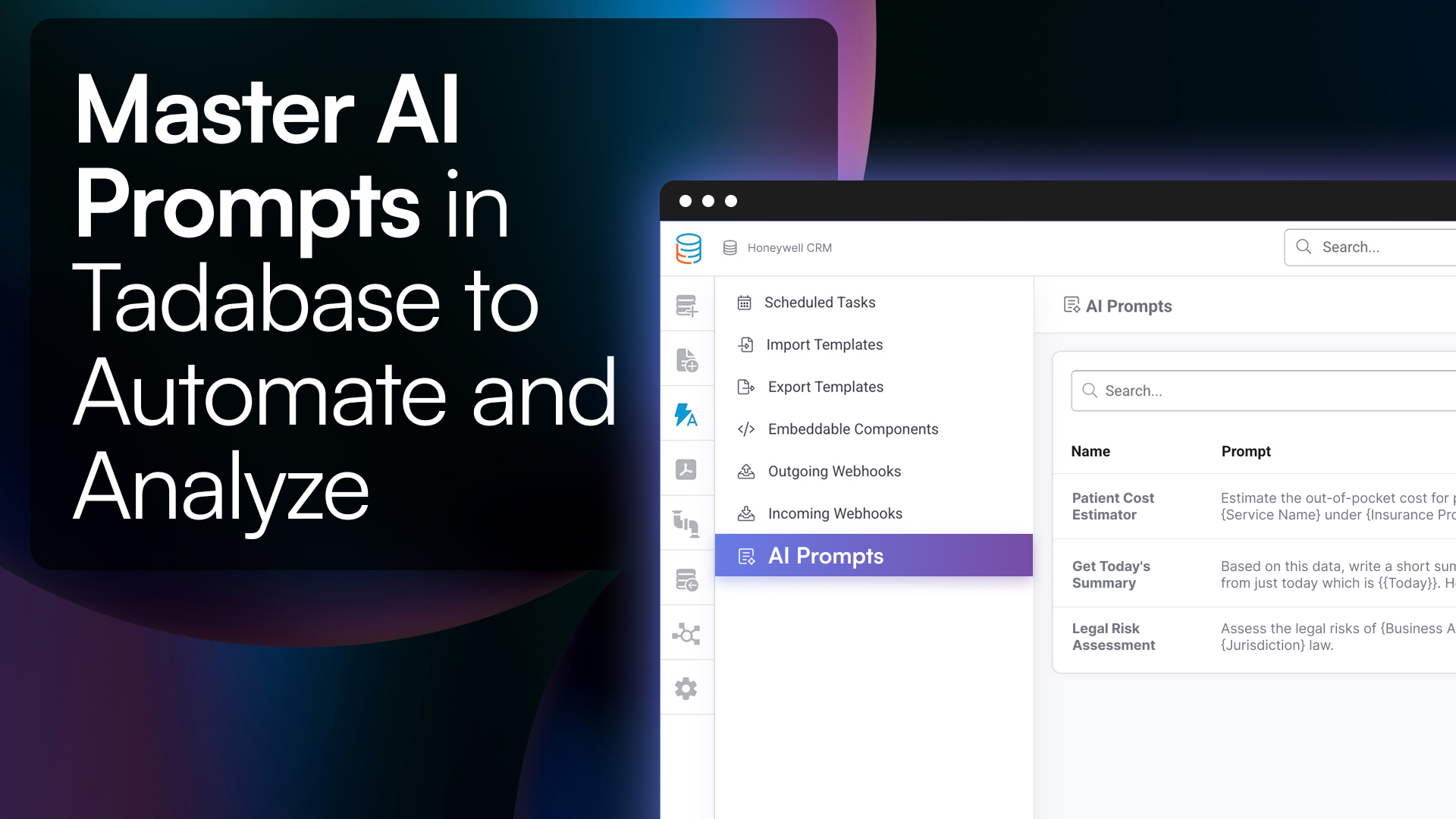Introduction
Custom code is like giving your application a set of personalized tools. Imagine buying a suit off the rack—it fits most people, but not everyone. Custom code is like taking that suit to a tailor, adjusting the fit to match your exact measurements. It allows developers to move beyond standard configurations, enabling businesses to build applications that perfectly suit their unique needs. With custom code, you can automate tasks, create specific integrations, and add features that go far beyond what’s typically available.
In this post, we’ll dive into what custom code is, why it’s crucial, and how Tadabase offers seamless customization while still empowering users with no-code options. You’ll also find alternatives to custom coding for those who prefer less complexity but still want powerful results.
What is Custom Code?
Custom code refers to any code written specifically for an application to achieve results that aren’t possible with built-in features. It’s like building an extension to your house instead of trying to rearrange furniture to make it fit your needs. Custom code lets you create entirely new features, fine-tune workflows, and connect to systems in ways that weren’t originally intended.
Platforms like Tadabase give you the best of both worlds, offering the flexibility of custom code while also providing powerful no-code solutions. This is ideal for businesses that need tailored solutions but don’t want to spend endless hours managing scripts and integrations.
When Should You Use Custom Code?
No-code platforms are evolving rapidly, but there are still times when custom code is the best (or only) solution. Think of it like this: if you need a precise tool for a specialized job, off-the-shelf tools won’t always cut it. Here are some cases where custom code shines:
- Advanced Integrations: If you’re connecting systems with unique APIs or processes, custom code lets you fine-tune those connections, making them work exactly the way you need.
- Custom Business Logic: Some industries have workflows or operations that are too specific for out-of-the-box solutions. In these cases, custom code can help automate complex tasks or enforce unique rules.
- Unique User Interfaces: When the way data is displayed is critical for user experience, custom code allows you to tailor the interface to be as user-friendly or interactive as you like.
At Tadabase, developers can inject their own code to achieve the exact customization they need. Whether it’s manipulating how forms behave or tweaking the look and feel of the app, custom code allows you to get hands-on with your platform.
For a deeper dive into how to implement custom code with Tadabase, check out our Customization and Code documentation.
Alternatives to Custom Code
While custom code is powerful, it’s not always the easiest or fastest route. Sometimes, it’s like choosing between cooking a meal from scratch or using a ready-made meal kit. Both get the job done, but one requires more time and expertise.
No-code platforms, like Tadabase, have advanced to the point where they handle many complex tasks without the need for custom scripts. You can manage vast datasets, automate workflows, or integrate external tools—all without writing a single line of code.
Tadabase’s Pipes and Databridge features are perfect examples of how you can create complex workflows and integrate systems without the need for custom code. These tools are designed to help businesses streamline their processes while keeping technical debt to a minimum. This is especially useful for teams that don’t have a dedicated developer but still need custom functionality.
Explore the full comparison between custom code and no-code alternatives on our Tadabase Custom Code Alternatives page.
How to Use Custom Code on Tadabase

Tadabase offers an extensive range of options for those who need custom code. Whether it’s tweaking the user interface with custom JavaScript and CSS or adding brand new features, our platform provides a seamless way to incorporate custom elements without breaking the core functionality of your app.
Here are a few examples of how custom code can elevate your Tadabase app:
- Modify form behavior: Trigger calculations or events when certain conditions are met, providing a more interactive user experience.
- Add animations and interactivity: Use JavaScript to add dynamic effects, making your app more engaging and visually appealing.
- Create custom components: If your business requires unique data visualizations or interactive elements, custom code allows you to build tailored components.
The key to successful custom coding is flexibility. At Tadabase, we ensure that while custom code is available, you can still achieve most goals using our built-in no-code features. This hybrid approach means you get the best of both worlds—simplicity when you want it, and complexity when you need it.
Conclusion
Custom code is like the Swiss Army knife of application development—it’s versatile, powerful, and allows you to tackle unique challenges. Whether it’s integrating specialized systems or creating a one-of-a-kind user experience, custom code ensures that you’re not limited by the constraints of pre-built software.
However, not every business has a development team. That’s why Tadabase gives you the choice: leverage our no-code tools for rapid, straightforward development, or add custom code when you need extra precision and control. No matter your choice, Tadabase is designed to help you build the applications that your business needs to thrive.
Frequently Asked Questions
1. What is custom code and why might I need it in Tadabase?
Custom code refers to any code you write to extend the capabilities of your Tadabase application. While Tadabase offers powerful no-code tools that handle many common business needs, custom code allows you to add specific functionalities, integrations, or workflows that aren't available out of the box. You might need custom code when you're connecting unique systems, automating highly specific processes, or creating a tailored user experience.
2. Do I need to be a developer to use custom code in Tadabase?
Not necessarily! Tadabase’s platform is built to cater to both non-technical users and developers. If you’re comfortable with code, you can easily inject custom JavaScript, CSS, or other types of code. However, if you’re not a developer, Tadabase’s no-code tools—like Pipes and Databridge—are designed to offer the flexibility you need without requiring coding skills. You can always hire a Certified Tadabase Partner if you need help with complex customizations.
3. What types of custom code can I add to Tadabase?
You can add various types of custom code in Tadabase, including:
- JavaScript to add interactivity or modify app behavior.
- CSS to adjust the styling, making your app visually unique.
- HTML to customize the structure and layout of your app’s pages.
- API connections through custom scripts to integrate with external services or platforms. Tadabase is highly flexible and allows you to extend its capabilities in whichever way you need.
4. Can I combine custom code with Tadabase’s no-code features?
Absolutely! One of Tadabase's greatest strengths is the ability to use no-code tools for core functionality while supplementing with custom code where necessary. For instance, you can build most of your application using no-code tools, like Pipes and Databridge, and then add custom code only for specific features that require advanced logic or integrations. This hybrid approach saves time and simplifies development.
5. When should I consider using custom code instead of Tadabase’s no-code options?
While Tadabase’s no-code tools cover a wide range of use cases, custom code becomes necessary when:
- You’re working with APIs or systems that require custom integration.
- You need to create specific workflows or processes not supported by no-code tools.
- The user interface needs fine-tuning to match specific business requirements. Custom code is typically used when you need to go beyond what’s possible with drag-and-drop tools or preset configurations.
6. How do I manage custom code within Tadabase?
Tadabase makes it easy to manage your custom code through the platform’s user-friendly interface. You can inject custom JavaScript or CSS directly into your app, or use custom components to expand the functionality. Additionally, Tadabase offers comprehensive documentation on Customization and Code, making it easy to implement and manage custom features.
7. Can I integrate external APIs with custom code in Tadabase?
Yes, Tadabase allows you to integrate external APIs through custom code, providing endless possibilities for your application. Whether you need to fetch data from a third-party service, send information to another platform, or synchronize different tools, custom code can handle these integrations seamlessly. For more common APIs, you can also use our Pipes feature, which requires no coding.
8. What are the risks of using custom code in my app?
While custom code offers flexibility, it also introduces some complexity. Custom code can:
- Increase maintenance efforts: You’ll need to ensure the code works properly and stays compatible with platform updates.
- Introduce bugs or performance issues: Poorly written code could slow down your app or cause unexpected errors. To minimize risks, it’s important to test your code thoroughly and ensure it’s well-maintained over time. Tadabase’s support team and Certified Partners are available if you need assistance.
9. How does Tadabase handle security when using custom code?
Security is a top priority at Tadabase. While the platform is designed to be secure out of the box, introducing custom code requires additional precautions. Make sure that any custom code is written securely to avoid vulnerabilities such as cross-site scripting (XSS) or injection attacks. Tadabase provides guidelines and best practices for securing your custom code, and you can always reach out to support or a Certified Partner if you have concerns.
10. What if I need help writing or implementing custom code in my Tadabase app?
If you’re not comfortable writing custom code, Tadabase offers several options:
- Certified Partners: You can hire a certified expert to help with custom code implementation. These partners are experienced in building on the Tadabase platform and can ensure your customizations are done efficiently.
- Support and Documentation: Tadabase’s Customization and Code documentation provides step-by-step guidance on how to add custom code to your app. The support team is also available to answer specific questions.
11. What are Tadabase’s no-code alternatives to custom code?
Tadabase offers a range of no-code tools designed to handle complex workflows and integrations without the need for custom code:
- Pipes: Automate tasks and integrate with third-party services using pre-built connectors.
- Databridge: Sync large datasets between Tadabase and external systems without writing a single line of code.
- Pre-built components: Create advanced functionalities with drag-and-drop components that cover most business needs. These tools are designed to reduce technical debt and make application development faster and easier for non-developers.








